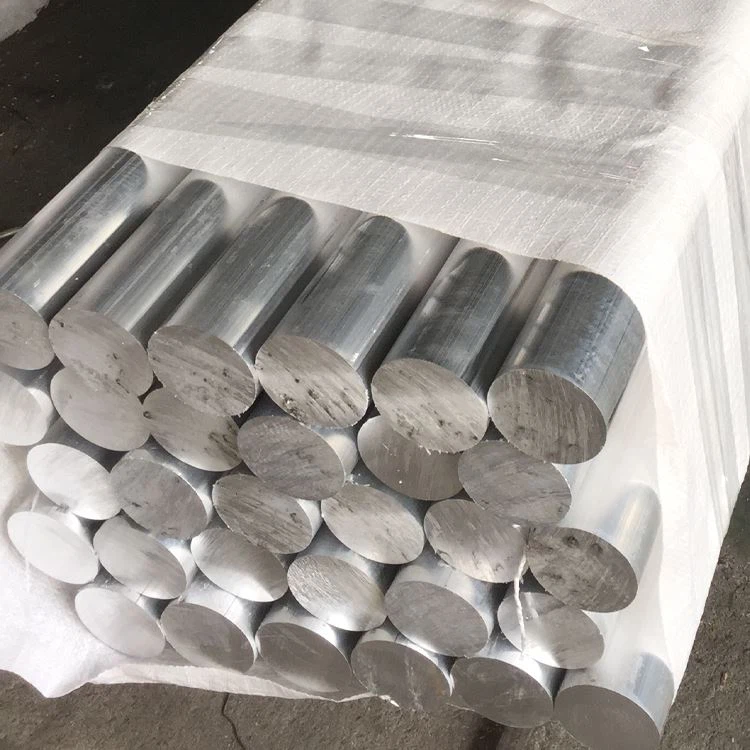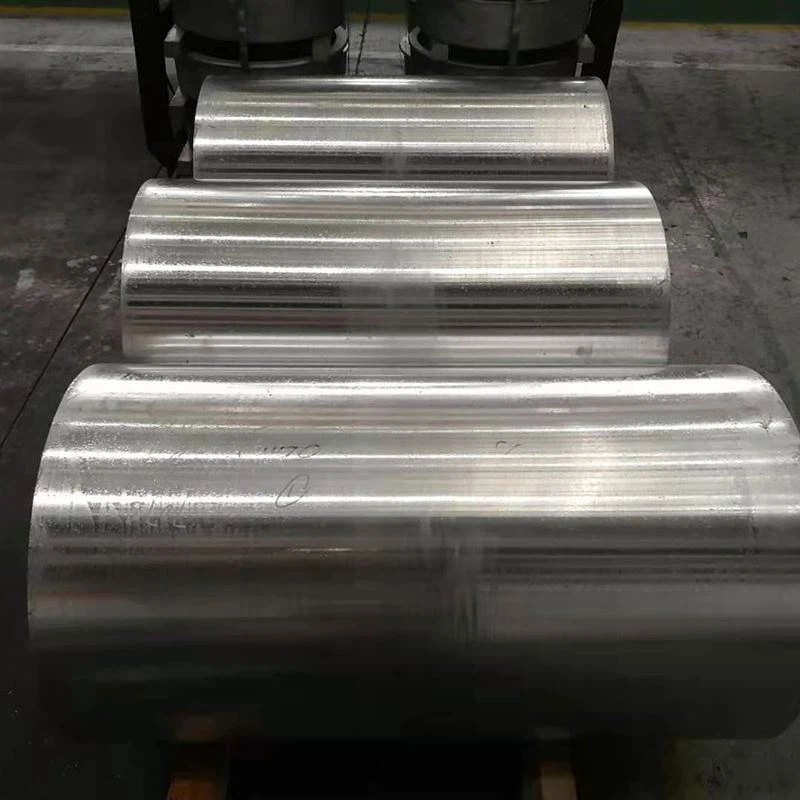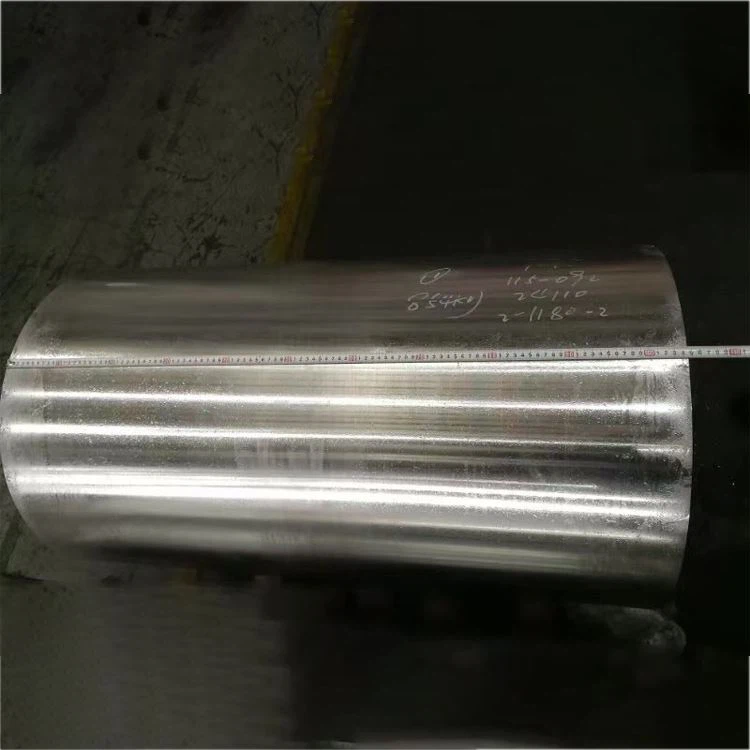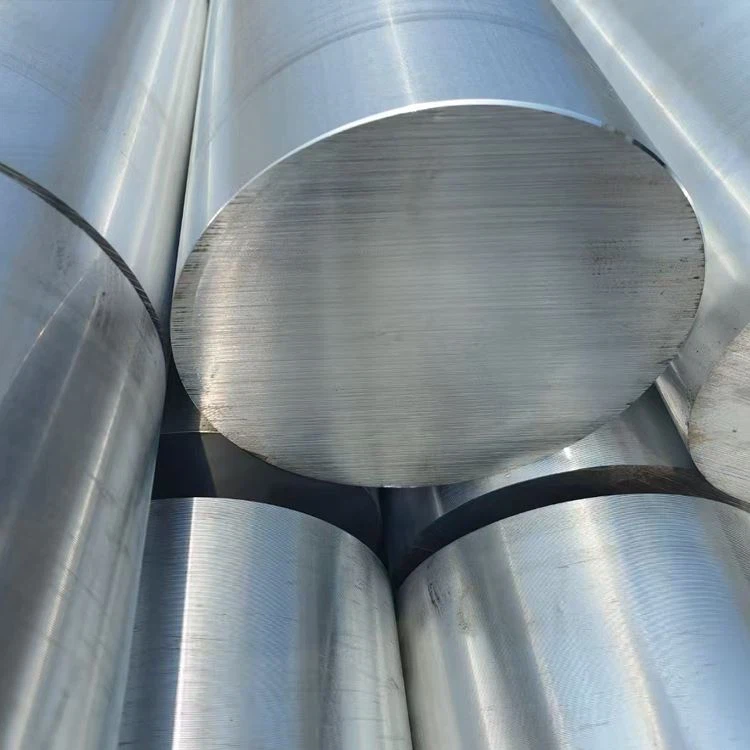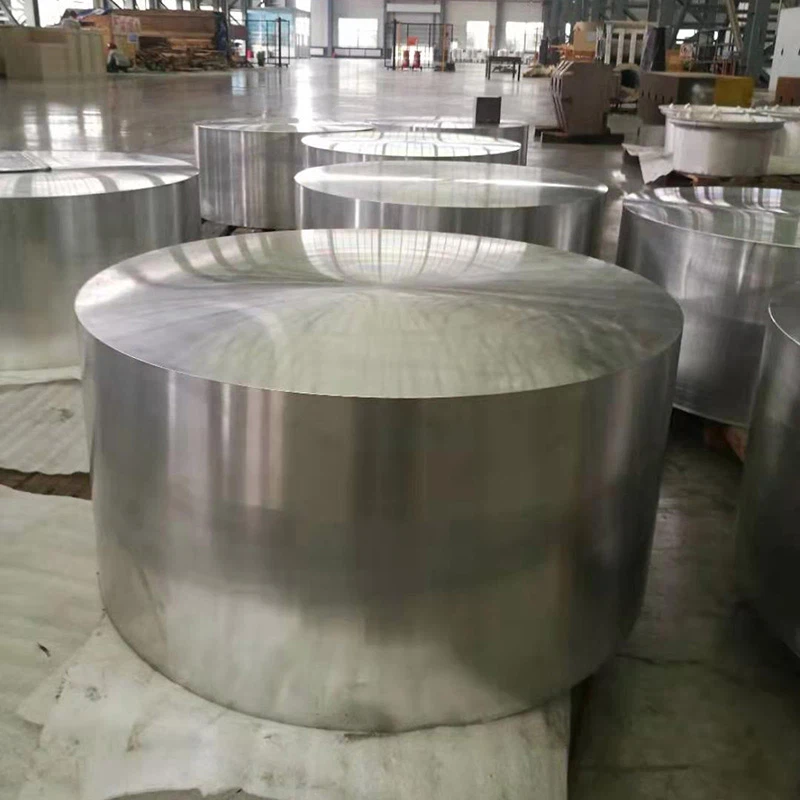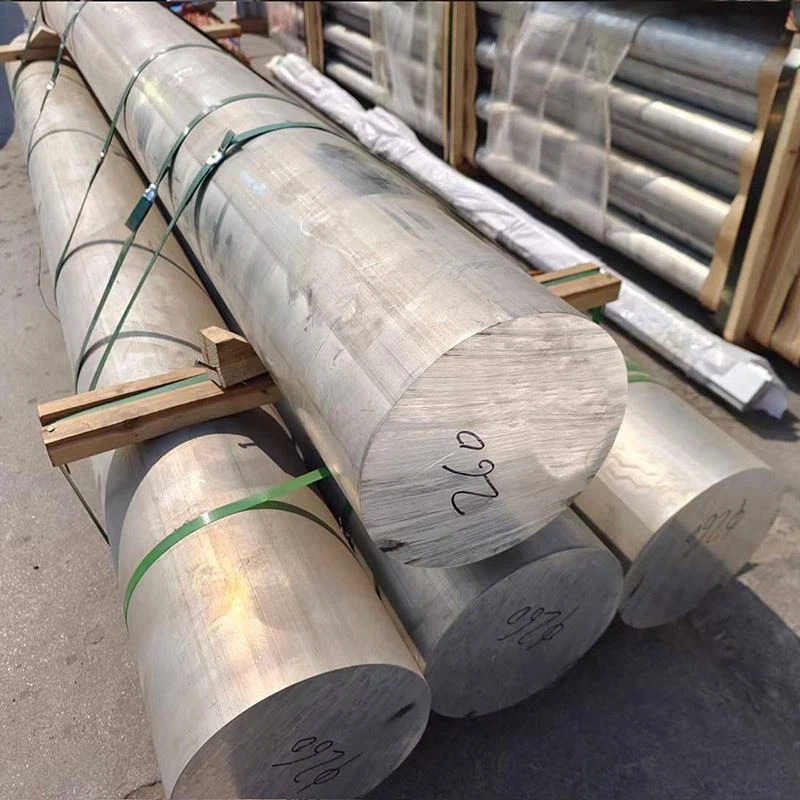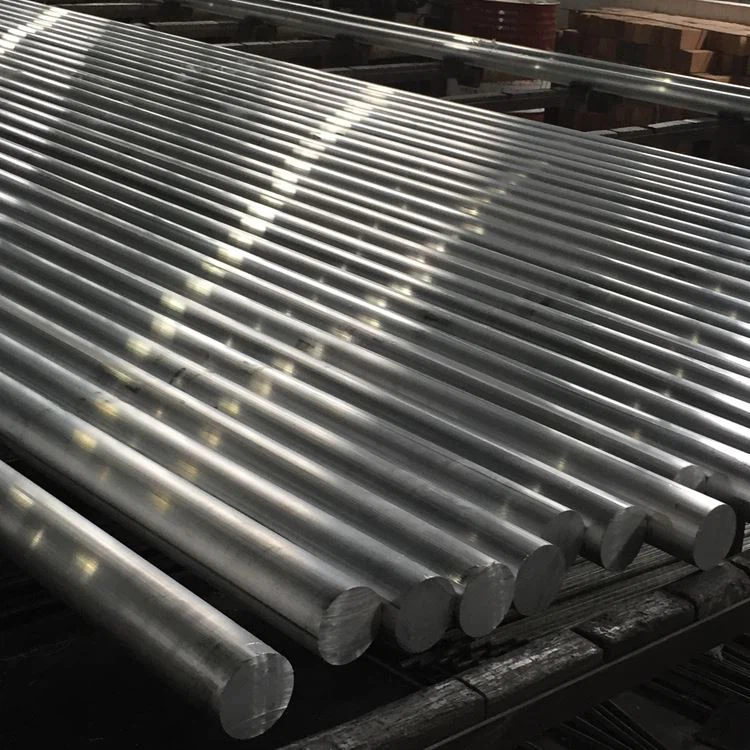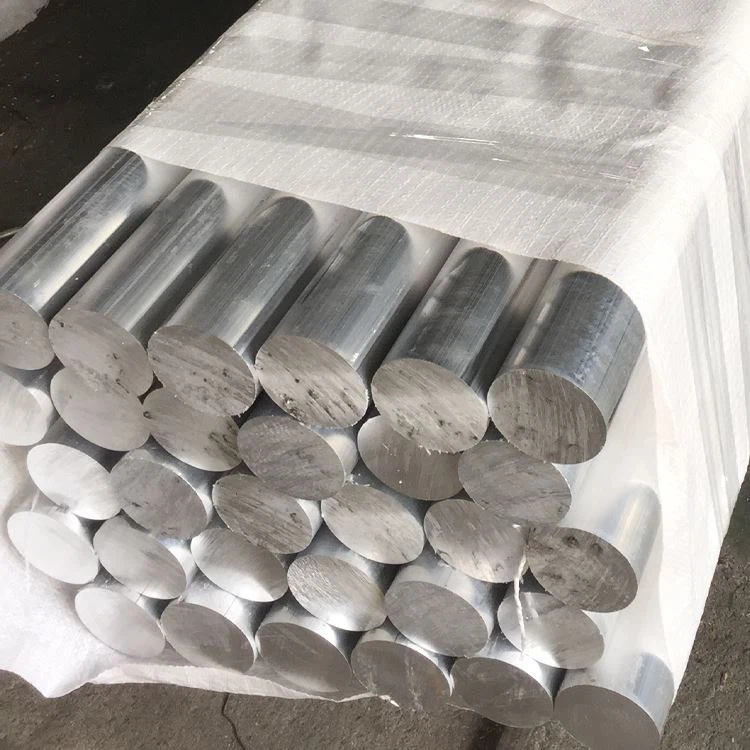1. Material Composition & Manufacturing Process
5083 forged aluminum round bar is a high-strength, non-heat-treatable aluminum-magnesium alloy specifically engineered to deliver exceptional performance in extremely harsh environments, particularly marine and cryogenic applications. Its precisely controlled forging process optimizes its internal microstructure, providing superior toughness, corrosion resistance, weldability, and fatigue strength, making it an ideal choice for shipbuilding, oil & gas, cryogenic engineering, and military applications:
Primary Alloying Elements:
Magnesium (Mg): 4.0-4.9% (primary strengthening element, provides high strength and good weldability)
Manganese (Mn): 0.4-1.0% (further enhances strength and refines grain)
Chromium (Cr): 0.05-0.25% (inhibits recrystallization, improves stress corrosion resistance)
Base Material:
Aluminum (Al): ≥93.2% (balance)
Controlled Impurities:
Iron (Fe): ≤0.40% max
Silicon (Si): ≤0.40% max
Copper (Cu): ≤0.10% max
Zinc (Zn): ≤0.25% max
Titanium (Ti): ≤0.15% max
Other elements: ≤0.05% each, ≤0.15% total
Premium Forging Process:
Melt Preparation:
High-purity primary aluminum (99.7% minimum)
Precise alloying element additions with ±0.05% tolerance
Advanced filtration through ceramic foam filters (30-40 ppi)
Advanced degassing treatment (hydrogen < 0.10 ml/100g)
Grain refinement with Al-Ti-B master alloy
Direct-chill (DC) semi-continuous casting to produce large-sized ingots
Homogenization:
420-450°C for 10-24 hours
Uniform temperature control: ±5°C
Controlled cooling rate: 15-25°C/hour
Eliminates microsegregation and homogenizes alloy composition
Billet Preparation:
Surface conditioning (scalping)
Ultrasonic inspection (100% volumetric)
Preheating: 380-420°C for uniform temperature
Forging Sequence:
Open-die preforming: 380-420°C
Closed-die or radial forging for finishing: 350-400°C
Hydraulic press capacity: 2,000-10,000 tons (depending on bar size)
Computer-controlled ram speed and pressure
Multi-stage forging to optimize grain flow and refine grains
Minimum reduction ratio: 3:1 to 5:1, ensuring dense and uniform internal structure
Annealing (O Temper) / Strain Hardening (H Tempers):
O Temper: 340-360°C for 1-3 hours, ensuring maximum ductility
H Tempers: Achieved through cold working (e.g., stretching, straightening), such as H111, H112
Final Processing:
Surface conditioning (e.g., peeled, ground, or precision turned)
Precision straightening
Dimensional verification
Surface quality inspection
All production stages are subject to stringent quality control and traceability management.
2. Mechanical Properties of 5083 Forged Round Bar
| Property | O (Annealed) | H111 | H112 | Test Method |
|---|---|---|---|---|
| Ultimate Tensile Strength | 270-305 MPa | 290-330 MPa | 280-320 MPa | ASTM E8 |
| Yield Strength (0.2%) | 110-135 MPa | 130-160 MPa | 115-145 MPa | ASTM E8 |
| Elongation (2 inch) | 16-22% | 14-20% | 16-22% | ASTM E8 |
| Hardness (Brinell) | 65-75 HB | 75-85 HB | 70-80 HB | ASTM E10 |
| Fatigue Strength (5×10⁸ Cycles) | 120-140 MPa | 130-150 MPa | 125-145 MPa | ASTM E466 |
| Shear Strength | 160-180 MPa | 175-195 MPa | 170-190 MPa | ASTM B769 |
| Modulus of Elasticity | 70.3 GPa | 70.3 GPa | 70.3 GPa | ASTM E111 |
| Fracture Toughness (K1C, typical) | 26-30 MPa√m | 28-32 MPa√m | 27-31 MPa√m | ASTM E399 |
Property Distribution:
Axial vs. Radial properties: <3% variation in strength properties (due to forged isotropy)
Internal property variation across large diameter bars: typically less than 5%
Core to surface hardness variation: <3 HB
Property retention after welding: Welded zones can retain over 90% of parent material strength with good ductility
Cryogenic performance: Strength and toughness even improve at -196°C (liquid nitrogen temperature), with no brittle transition
3. Microstructural Characteristics
Key Microstructural Features:
Grain Structure:
Fine, uniform equiaxed grains
ASTM grain size 6-8 (45-22μm)
Forging process ensures grain flow follows the bar’s contour, enhancing mechanical properties and fatigue resistance
Uniform grain distribution across the entire cross-section, free from coarse grain segregation
Precipitate Distribution:
β-Mg₅Al₈ phase: Fine and uniformly dispersed, acting as the primary strengthening phase
AlMn or AlFeMn dispersoids: Further refines grains and inhibits recrystallization
AlCr phase: Improves stress corrosion resistance
Texture Development:
Mild texture induced by forging, designed to optimize multi-directional properties
Forged bars exhibit superior isotropy compared to rolled products
Special Features:
Continuous precipitation of β-phase at grain boundaries effectively controlled to avoid stress corrosion sensitivity
Moderate dislocation density, beneficial for work hardening
Absence of coarse primary intermetallic compounds
4. Dimensional Specifications & Tolerances
| Parameter | Standard Range | Precision Tolerance | Commercial Tolerance | Test Method |
|---|---|---|---|---|
| Diameter | 100-800 mm | ±0.5mm up to 300mm | ±1.0mm up to 300mm | Micrometer/Caliper |
| ±0.2% above 300mm | ±0.5% above 300mm | |||
| Ovality | N/A | 50% of diameter tolerance | 75% of diameter tolerance | Micrometer/Caliper |
| Length | 1000-6000 mm | ±5mm | ±10mm | Tape measure |
| Straightness | N/A | 0.5mm/m | 1.0mm/m | Straightedge/Laser |
| Surface Roughness | N/A | 3.2 μm Ra max | 6.3 μm Ra max | Profilometer |
| Cut End Squareness | N/A | 0.5° max | 1.0° max | Protractor |
Standard Available Forms:
Forged Round Bar: Diameters 100mm to 800mm
Custom cut-to-length service available
Special tolerances and surface finishes (e.g., peeled, ground, precision turned) available upon request
Available in various forged tempers, such as O, H111, H112
5. Temper Designations & Work Hardening Options
| Temper Code | Process Description | Optimal Applications | Key Characteristics |
|---|---|---|---|
| O | Fully annealed, softened | Applications requiring maximum formability | Maximum ductility, lowest strength |
| H111 | Moderately strain hardened after full annealing | General structures, excellent post-weld properties | Good balance of strength and ductility |
| H112 | Flattened only after forging | Retains residual stresses from forging | Suitable for further processing before machining |
| H321 | Stabilized H32 temper | High strength, strict corrosion resistance requirements | Excellent SCC resistance, higher strength |
Temper Selection Guidance:
O: For complex cold forming operations or where further deep processing is needed
H111: For structural components requiring high strength, weldability, and good corrosion resistance
H112: Used directly after forging, suitable for parts with significant machining
H321: For marine and cryogenic applications with extremely high stress corrosion cracking resistance requirements
6. Machining & Fabrication Characteristics
| Operation | Tool Material | Recommended Parameters | Comments |
|---|---|---|---|
| Turning | Carbide, PCD | Vc=150-400 m/min, f=0.1-0.4 mm/rev | Easy to achieve good surface finish, moderate tool wear |
| Drilling | Carbide, TiN coated | Vc=60-150 m/min, f=0.15-0.35 mm/rev | Through-coolant drills recommended, good for deep holes |
| Milling | Carbide, HSS | Vc=200-600 m/min, fz=0.1-0.25 mm | High-positive rake angle tools, large depth of cut, high feed |
| Tapping | HSS-E-PM, TiCN coated | Vc=15-30 m/min | Proper lubrication for good thread quality |
| Reaming | Carbide, HSS | Vc=50-100 m/min, f=0.2-0.5 mm/rev | H7/H8 tolerance achievable |
| Sawing | Carbide-tipped blade | Vc=800-2000 m/min | Efficient cutting for large diameter bars |
Fabrication Guidance:
Machinability Rating: 70% (1100 aluminum = 100%), slightly lower machinability in strain-hardened tempers
Chip Formation: Gummy chips, tend to wrap around tools, requires good chip breakers
Coolant: Water-soluble cutting fluid (8-12% concentration), high flow rate cooling
Tool Wear: Moderate, regular tool inspection needed
Weldability: Excellent with TIG and MIG welding, one of the best weldable aluminum alloys
Cold Working: Good formability in O temper, moderate in H111 temper
Hot Working: Recommended temperature range 300-400°C
Stress Corrosion Cracking: O, H111, H112 tempers have excellent resistance to stress corrosion cracking
Cryogenic Properties: Retains or improves strength and toughness at extremely low temperatures
7. Corrosion Resistance & Protection Systems
| Environment Type | Resistance Rating | Protection Method | Expected Performance |
|---|---|---|---|
| Industrial Atmosphere | Excellent | Clean surface | 20+ years |
| Marine Atmosphere | Excellent | Clean surface | 15-20+ years |
| Seawater Immersion | Very Good | Cathodic protection or painting | 10-15+ years with maintenance |
| High Humidity | Excellent | Clean surface | 20+ years |
| Stress Corrosion | Excellent | Appropriate temper selection (H111/H112/H321) | Extremely low susceptibility |
| Exfoliation | Excellent | Standard protection | Extremely low susceptibility |
| Galvanic Corrosion | Good | Proper isolation | Careful design with dissimilar metals |
Surface Protection Options:
Anodizing:
Type II (Sulfuric): 10-25μm thickness, provides additional protection and aesthetics
Type III (Hard): 25-75μm thickness, increases wear resistance and hardness
Dyeing and sealing: Enhances aesthetics and corrosion resistance
Conversion Coatings:
Chromate conversion coatings (MIL-DTL-5541): Excellent base for paints or adhesives
Chromium-free alternatives: Environmentally compliant
Painting Systems:
Epoxy primer + polyurethane topcoat: Provides excellent long-term protection, especially for marine applications
Antifouling paint: For submerged parts of ships
8. Physical Properties For Engineering Design
| Property | Value | Design Consideration |
|---|---|---|
| Density | 2.66 g/cm³ | Lightweight design, center of gravity control |
| Melting Range | 575-635°C | Welding and casting parameters |
| Thermal Conductivity | 121 W/m·K | Thermal management, heat transfer design |
| Electrical Conductivity | 34% IACS | Electrical conductivity in electrical applications |
| Specific Heat | 897 J/kg·K | Thermal mass and heat capacity calculations |
| Thermal Expansion (CTE) | 24.0 ×10⁻⁶/K | Dimensional changes due to temperature variations |
| Young’s Modulus | 70.0 GPa | Deflection and stiffness calculations |
| Poisson’s Ratio | 0.33 | Structural analysis parameter |
| Damping Capacity | Moderate | Vibration and noise control |
Design Considerations:
Operating Temperature Range: -200°C to +80°C (performance degrades above this)
Cryogenic Performance: Maintains or improves strength and toughness at extremely low temperatures, ideal for cryogenic structural materials
Magnetic Properties: Non-magnetic
Recyclability: 100% recyclable with high scrap value
Formability: Good in O temper, moderate in H111 temper
Dimensional Stability: Good dimensional stability after forging and stress relief
Strength-to-Weight Ratio: Advantageous in applications requiring high strength and corrosion resistance
9. Quality Assurance & Testing
Standard Testing Procedures:
Chemical Composition:
Optical emission spectroscopy
X-ray fluorescence analysis
Verification of all major elements and impurity content
Mechanical Testing:
Tensile testing (longitudinal, transverse, and radial)
Hardness testing (Brinell, multiple locations)
Impact testing (Charpy V-notch, especially for cryogenic applications)
Fatigue testing (as required)
Nondestructive Testing:
Ultrasonic inspection (100% volumetric, per ASTM B594/E2375, or AMS 2630)
Eddy current testing (surface and near-surface defects)
Penetrant inspection (surface defects)
Radiographic testing (internal macroscopic defects)
Microstructural Analysis:
Grain size determination
Precipitate and intermetallic evaluation
Grain flow pattern verification
Stress corrosion sensitivity testing
Dimensional Inspection:
CMM (Coordinate Measuring Machine) verification
Diameter, length, straightness, ovality, etc.
Standard Certifications:
Material Test Report (EN 10204 3.1 or 3.2)
Chemical analysis certification
Mechanical properties certification
Heat treatment/forging certification
Nondestructive testing certification
Conformance to ASTM B247 (forged bar), AMS 4114, EN AW-5083, etc.
10. Applications & Design Considerations
Primary Applications:
Marine Industry:
Shipbuilding and yacht construction (hull structures, masts, deck equipment)
Offshore drilling platform structures
Desalination equipment
Submarine components
Cryogenic Engineering:
Liquefied Natural Gas (LNG) storage tanks and transfer pipelines
Aerospace cryogenic fuel tanks
Ultra-low temperature equipment components
Transportation Industry:
Railway vehicles (high-speed train bodies, freight cars)
Automotive fuel tanks and structural components
Tankers, bulk material carriers
Military and Defense:
Armored vehicle structures
Naval ship and submarine components
Military bridges
Pressure Vessels:
Medium to high-pressure vessels
Aerospace pressure vessels
Design Advantages:
Excellent corrosion resistance, especially in marine and industrial environments
Superior weldability, high weld strength with no need for post-weld heat treatment
Exceptional cryogenic toughness, with improved properties at extremely low temperatures
High strength and good ductility, suitable for structural components
Forging process optimizes grain flow and internal quality
Excellent resistance to stress corrosion cracking and exfoliation corrosion
Lightweight, contributing to energy savings and emission reduction
Non-magnetic, suitable for specific applications
Design Limitations:
Not strengthened by heat treatment
Lower strength compared to 2xxx and 7xxx series high-strength alloys
Long-term use above 65°C may lead to sensitization (Mg₂Al₃ precipitation), increasing susceptibility to stress corrosion; H111 or H321 tempers should be selected
Machinability is not as good as alloys like 6061
Relatively higher cost
Economic Considerations:
High-performance material, higher initial cost but long lifespan and low maintenance costs
Excellent corrosion resistance reduces long-term protection needs
Good weldability lowers the cost of fabricating complex structures
Lightweight properties help reduce transportation fuel costs
Sustainability Aspects:
100% recyclable, high resource utilization efficiency
Aluminum production processes are becoming increasingly environmentally friendly, with reduced energy consumption
Long service life reduces waste generation
Material Selection Guidance:
Choose 5083 when the highest levels of corrosion resistance, weldability, and cryogenic performance are required
5083 is ideal when high strength is needed for service in marine environments
For structures serving long-term at temperatures above 65°C, H111 or H321 tempers should be selected
Consider 7xxx series alloys when higher strength is paramount and corrosion resistance or cryogenic performance are not primary concerns

